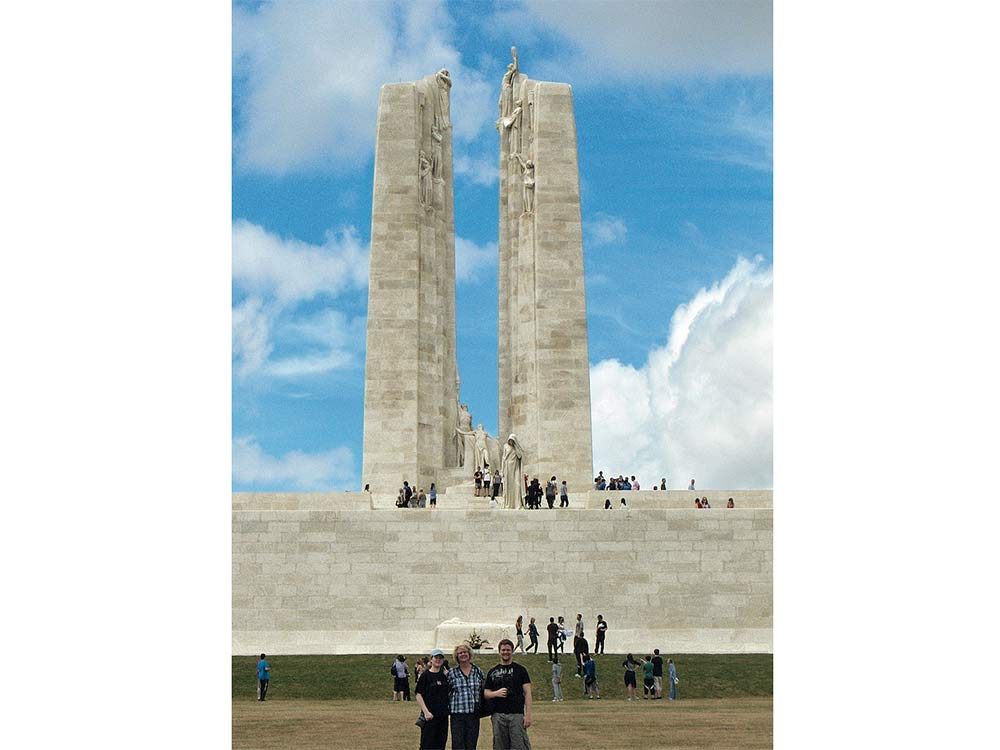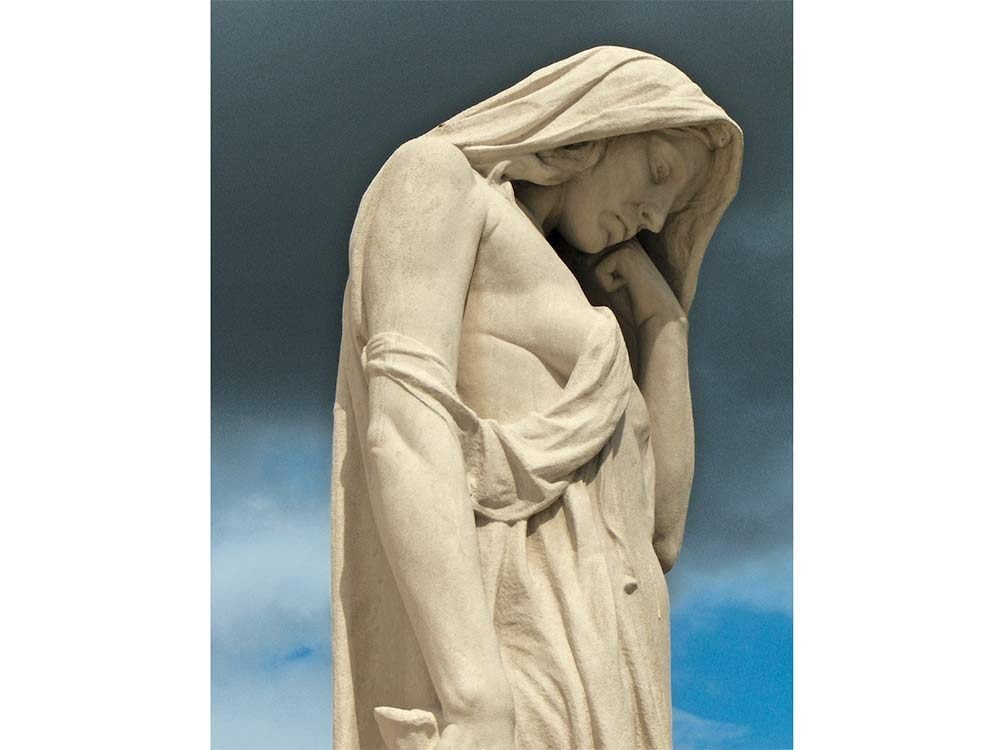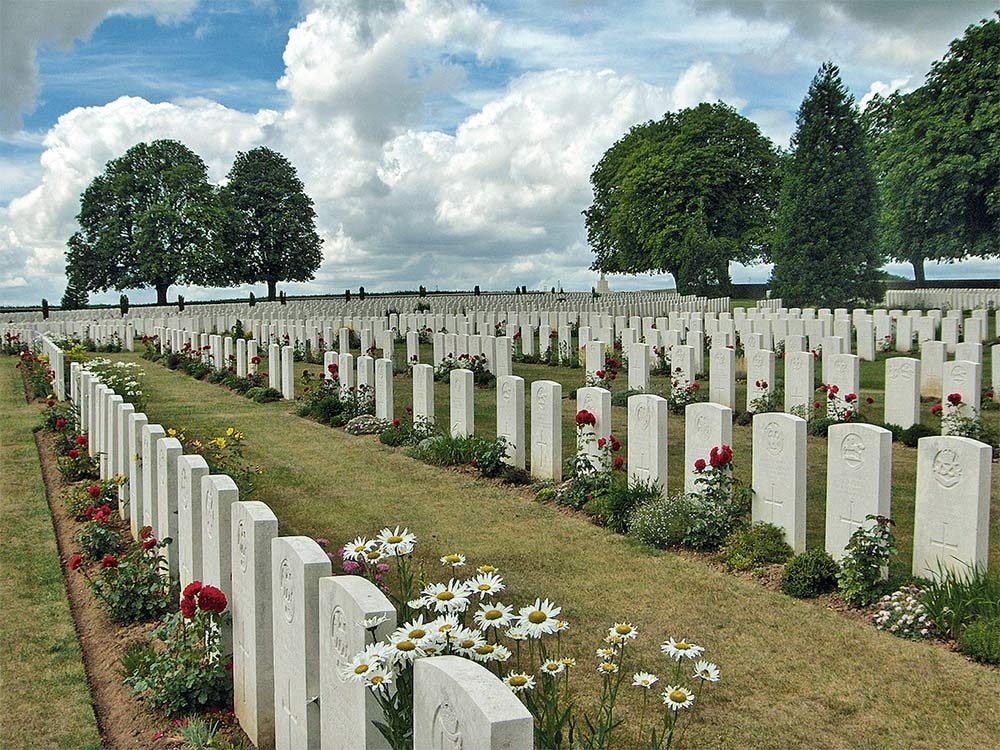
Visiting Vimy Ridge
In the summer of 2010, my husband Shane and I, along with two of our children, Matthew and Katelyn—then 18 and 16 respectively, decided to take a family trip to Europe. Matthew was, and still is, very interested in the history of both world wars, and while in France, we took a one-day bus tour to visit the Vimy Ridge National Historic Site of Canada.
This was a very moving and enlightening experience for us as Canadians. I remembered learning in school that Canadians had made significant contributions in helping the Allied powers defeat the Germans in World War I. However, being on the very ground where the battles occurred really brought home the sacrifice of our Canadian soldiers and their families during that difficult time.
The historic memorial site includes the front-line trenches where the German and Canadian soldiers faced off against one another. The ground in the entire area is covered with craters left from the artillery bombardment, and some surrounding fields are still fenced off with warnings about undetonated devices. What must it have been like for those soldiers to witness such devastation?
Being somewhat naive about war, I didn’t realize the immense work involved in preparing for battle. The trenches are four to five feet deep and run for many kilometres along the front line. Behind these trenches, Canadian soldiers built an extensive tunnel system to ferry supplies and personnel to the front line.

On April 9, 1917, the Canadian troops, after crouching in the tunnel system for 36 hours, burst forth from the tunnel and pushed the Germans back metre-by-metre. By the next day, the Canadian troops had accomplished their objective of capturing the 14-kilometre-long escarpment back from the Germans.
Also located in the historic park is the monument to the Canadian soldiers killed in France during World War I. The monument bears the names of 11,285 Canadian soldiers who died in France and who have no known graves. More than 66,000 Canadians died during the Great War. The monument is immense and powerful, visible from quite a distance in the French countryside.
Part of the monument also includes a sculpture of Mother Canada—it’s very moving and brought tears to my eyes as I thought how difficult it must have been for relatives of those soldiers lost during the war.
More than 7,000 Canadian soldiers are buried within a 20-kilometre radius of the monument, and visiting the cemeteries is a sobering experience. All the Commonwealth cemeteries are managed by the Commonwealth War Graves Commission, so they all look similar. The tombstones are identically shaped, with emblems depicting either the country or regiment of the soldier. Planted between every second tombstone is a rose bush so that at some point during the day the sunlight casts the shadow of a rose on each grave.

Almost 100 years after the end of World War I, some graves are still adorned with newly placed mementos from family members who have visited the graves of lost loved ones.
For Matthew, since he knew so much more about the history of the world wars and the details of the battles, being there brought that history to life. He is currently in the Netherlands and has already booked a ticket to attend the 100th anniversary ceremony at Vimy Ridge this year.
Katelyn was less enthusiastic about visiting the monument at first, but afterwards she said how moved she was and that it gave her a huge appreciation for the sacrifices that were made. When she returned to school that fall, they had a Remembrance Day service and she went up to personally thank the veterans who were in attendance.
As for me, I was left with an immense feeling of gratitude to those soldiers for their sacrifice. It’s thanks to them we can all live in this wonderful and free country of Canada.